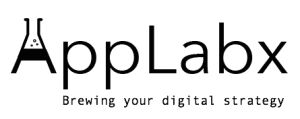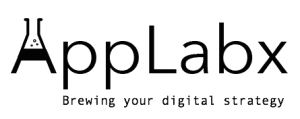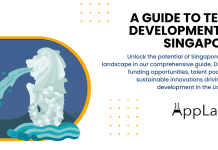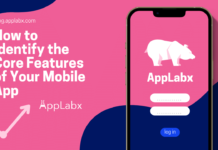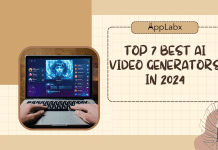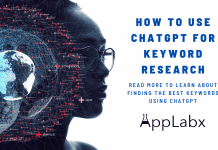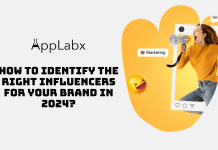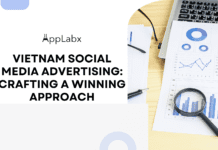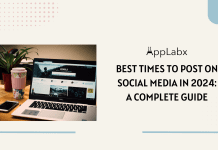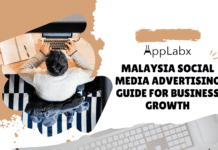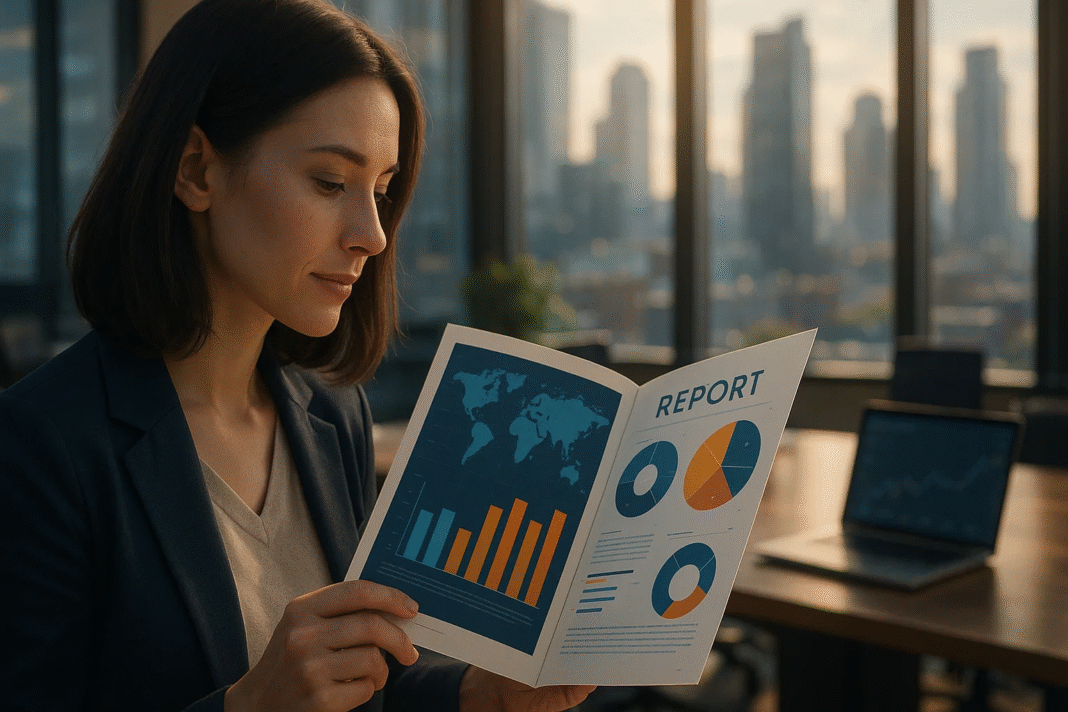Key Takeaways
- AI and automation are central to 2025 marketing, driving efficiency, hyper-personalization, and predictive analytics across channels.
- Privacy-first strategies and first- and zero-party data collection are essential for building consumer trust and compliance.
- High-ROI channels—email, short-form video, micro-influencers, and AR/VR—are reshaping engagement and conversion strategies globally.
The digital marketing landscape in 2025 is entering a phase of unprecedented transformation, shaped by a complex interplay of technological innovation, evolving consumer behaviors, and macroeconomic pressures. As organizations strive to remain competitive in an increasingly fragmented and dynamic marketplace, understanding the state of digital marketing has never been more critical. This comprehensive report examines global trends, strategic imperatives, and financial benchmarks, providing marketers, CMOs, and business leaders with an expert roadmap for navigating the complexities of modern digital marketing.
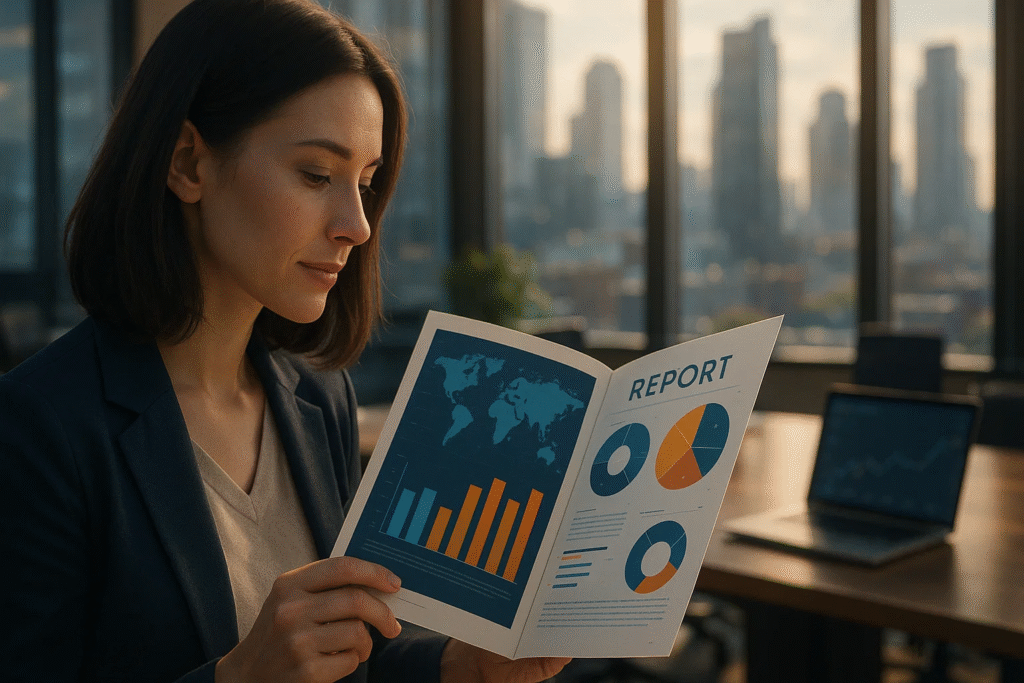
In 2025, the industry is defined by a delicate balance between innovation and efficiency. On one hand, marketers face intense scrutiny to demonstrate measurable return on investment (ROI) amidst economic uncertainty and heightened consumer expectations for privacy. On the other hand, advancements in artificial intelligence (AI), immersive technologies, and the creator economy are unlocking new growth frontiers, allowing brands to engage audiences in more personalized, immersive, and authentic ways than ever before. This duality has created a strategic imperative for organizations: succeed by combining data-driven performance with innovative, forward-looking marketing strategies.
Globally, advertising spend continues to grow despite economic headwinds, reflecting the resilience and adaptability of digital channels. Projections indicate that worldwide ad spend will approach nearly $1 trillion in 2025, with digital advertising capturing the lion’s share at over 68%, underscoring its centrality in modern marketing strategies. Regionally, the Americas remain the largest market, while Asia-Pacific shows the fastest growth, driven by technology adoption and the expansion of e-commerce. Within industries, telecommunications, retail, and personal care are emerging as dominant drivers of digital investment, reflecting both consumer demand and technological enablement.
The strategic landscape is further complicated by the shift toward a privacy-first paradigm, with first-party and zero-party data becoming critical assets. As third-party cookies decline, marketers are increasingly relying on consent-driven data collection and AI-powered analytics to create hyper-personalized campaigns. Simultaneously, AI integration has moved beyond experimental applications, now serving as a core operational tool that enhances content creation, audience segmentation, predictive analytics, and campaign optimization, resulting in measurable gains in productivity and cost efficiency.
Another key development in 2025 is the blurring of the traditional marketing funnel. Leading brands are embracing omnichannel strategies that unify digital and physical touchpoints, leveraging integrated technology stacks to orchestrate campaigns across email, social media, paid search, and emerging platforms. This shift allows marketers to track performance with greater accuracy, optimize budgets, and create cohesive customer experiences that drive both engagement and conversions.
Content marketing, social media, paid search, email, and emerging technologies like AR/VR and creator-driven campaigns are no longer siloed initiatives—they are interconnected components of a full-funnel strategy designed to maximize ROI. High-quality, engaging content, short-form video, micro-influencer partnerships, and immersive experiences are proving to be the most effective drivers of audience engagement, conversion, and long-term brand loyalty.
This expert report provides a deep dive into the key financial and operational benchmarks of digital marketing in 2025, including budget allocations, service costs, essential technology stacks, and agency pricing models. It also highlights the emerging frontiers of growth, such as the creator economy and immersive marketing, while offering actionable insights for marketers seeking to optimize performance in a rapidly evolving landscape.
In essence, understanding the state of digital marketing in 2025 is about more than identifying trends—it requires a holistic view of how technology, consumer behavior, financial strategy, and creative innovation intersect. For organizations seeking sustainable growth, the path forward lies in leveraging data-driven insights, adopting AI and immersive technologies strategically, and building resilient, privacy-compliant customer relationships that generate measurable business impact. This report aims to equip marketing leaders with the knowledge and frameworks necessary to thrive in this transformative year.
But, before we venture further, we like to share who we are and what we do.
About AppLabx
From developing a solid marketing plan to creating compelling content, optimizing for search engines, leveraging social media, and utilizing paid advertising, AppLabx offers a comprehensive suite of digital marketing services designed to drive growth and profitability for your business.
At AppLabx, we understand that no two businesses are alike. That’s why we take a personalized approach to every project, working closely with our clients to understand their unique needs and goals, and developing customized strategies to help them achieve success.
If you need a digital consultation, then send in an inquiry here.
Or, send an email to [email protected] to get started.
The State of Digital Marketing in 2025: An Expert Report on Global Trends
- Executive Summary: The Defining Paradox of 2025
- The Macroeconomic Context & Global Market Overview
- The Core Strategic Imperatives
- Deep Dive into Core Digital Marketing Channels
- The New Growth Frontiers
- A Financial Blueprint for 2025
- The Road Ahead: Navigating for Growth
1. Executive Summary: The Defining Paradox of 2025
The digital marketing ecosystem in 2025 is characterized by a striking paradox. On one front, ongoing economic volatility and intensifying consumer demands for privacy compel marketing leaders to deliver immediate, measurable returns on investment. Efficiency, precision, and data-backed decision-making have become non-negotiable. Conversely, the industry is witnessing an unprecedented wave of innovation. Breakthroughs in artificial intelligence (AI), the maturation of the creator economy, and the proliferation of immersive technologies are creating entirely new avenues for growth.
Success for Chief Marketing Officers (CMOs) and strategic business leaders now requires a dual-focus approach. It involves harmonizing short-term performance optimization with forward-looking investments in transformative, high-potential channels. Rather than choosing between conventional methods and emerging innovations, organizations are pivoting from a channel-specific approach to a holistic, data-driven, full-funnel strategy.
Global Market Overview and Financial Benchmarks
The global advertising market is projected to reach $992 billion in 2025, with digital advertising claiming a dominant 68.4% share ($678.7 billion). This expansion occurs despite a cautious economic outlook, illustrating the resilience and adaptability of digital marketing infrastructures. Key financial and operational benchmarks now guide strategic planning across sectors.
Marketing Budget Allocation
| Category | 2024 (%) | 2025 (%) | Notes |
|---|---|---|---|
| Overall Marketing Budget vs Revenue | 7.7% | 9.4% | CMOs face heightened efficiency pressures |
| Paid Media | 29.1% | 30.6% | Digital allocations prioritized |
| Social Media | 10.5% | 11.3% | High engagement and measurable impact |
| Content Marketing | 9.7% | 10.2% | Focus on brand authority and SEO gains |
| Paid Search | 9.1% | 9.8% | Performance-driven channel |
Performance Metrics and ROI Analysis
| Channel | ROI | Observations |
|---|---|---|
| Email Marketing | 36:1 | Continues as the highest-yield channel |
| Micro-Influencer Campaigns | 20:1 | Outperform macro-influencer partnerships (6:1 ROI) |
| Macro-Influencer Campaigns | 6:1 | Suitable for brand reach, less ROI-efficient |
| AI-Powered AR Experiences | ↑20% Conversion | Reduce returns by 25%-40% |
Technological Transformation and Innovation
The role of technology in digital marketing has transitioned from experimental to essential. Key developments include:
- Artificial Intelligence (AI): Adoption of generative AI has surged 116% year-over-year, driving an 8.6% uplift in sales productivity and a 10.8% reduction in marketing overhead. AI now underpins content creation, predictive analytics, and automated campaign management.
- Immersive Marketing: Augmented Reality (AR) and AI-driven immersive experiences are proving commercially viable. Early adopters report conversion rate increases of 20%, coupled with significant reductions in returns (25%-40%).
- Creator Economy: Micro-influencers and niche creators are reshaping engagement strategies. Their campaigns now generate higher ROI per dollar than traditional influencer partnerships, signaling a shift in influencer marketing dynamics.
Strategic Implications for CMOs and Marketing Leaders
The convergence of economic pressure, technological innovation, and evolving consumer behavior demands a multi-layered strategy:
- Data-Driven Optimization: Leverage analytics to inform all campaign decisions. Full-funnel visibility and predictive modeling are now critical.
- Balanced Investment: Allocate resources to high-ROI channels while maintaining experimental budgets for AI, AR, and emerging creative platforms.
- Consumer-Centric Approach: Respect for privacy and personalization remains paramount. Compliance-driven yet engaging campaigns drive trust and long-term value.
Conclusion: The Roadmap Forward
Digital marketing in 2025 is no longer defined by traditional channel silos. It is an interconnected ecosystem requiring CMOs and business leaders to adopt integrated, data-driven strategies that balance immediate ROI with transformative innovation. By aligning financial prudence with forward-thinking technology adoption, organizations can not only survive but thrive in an era of rapid change.
2. The Macroeconomic Context & Global Market Overview
a. The Global Digital Ad Spend Landscape
Global Digital Advertising Trends
The global advertising industry in 2025 continues to demonstrate resilience amid fluctuating economic conditions. Worldwide ad spending is projected to increase by 4.9%, reaching an aggregate value of $992 billion. While this growth is modest compared to the 6.7% surge in 2024, which was influenced by major events such as the Paris Olympics and the U.S. Presidential election, total advertising investment remains ahead of global economic expansion by 2.1 percentage points, highlighting the sector’s adaptive strength.
Digital advertising has emerged as the primary engine of growth, consolidating its status as the dominant channel within the marketing ecosystem. Forecasts indicate digital ad expenditure will rise 7.9% to $678.7 billion, securing 68.4% of the total market share. Certain analyses project that digital ad spend could surpass $750 billion, marking a historic milestone where digital channels will command more than 75% of global ad spend, signaling a definitive shift in media prioritization.
Regional Dynamics and Investment Priorities
| Region | 2025 Ad Spend ($B) | Growth Rate (%) | Key Markets & Notes |
|---|---|---|---|
| Americas | 429.6 | 4.2 | North America dominates with 37.15% market share; Brazil leads LatAm with 7.1% growth |
| Asia-Pacific | 361.5 | 6.0 | India is fastest-growing with 7.9%; region is overall most dynamic globally |
| EMEA | 200.7 | 4.5 | United Kingdom leads with 6.9% growth; growth driven by Western Europe & Middle East |
This uneven distribution underscores the importance of region-specific strategies for marketing leaders. While the Americas maintain dominance in absolute spending, Asia-Pacific exhibits stronger growth momentum, suggesting high-potential opportunities in emerging digital markets.
Industry-Specific Growth and Market Drivers
| Industry Sector | Projected Growth (%) | Key Drivers |
|---|---|---|
| Telecommunications | 8.3 | Expansion of 5G networks, rising consumer demand for high-speed connectivity |
| Cosmetics & Personal Care | 7.3 | Consumer focus on skincare, wellness, and lifestyle-oriented product adoption |
| Retail | 6.5 | Integration of media and commerce, e-commerce growth fueling advertising spend |
| Automotive | 5.8 | EV adoption, digital showrooming, and online car configurators driving demand |
The Telecommunications sector is set to experience the fastest expansion, fueled by technological infrastructure growth and digital adoption. The Cosmetics & Personal Care market follows closely, reflecting heightened consumer engagement in personal wellness and lifestyle sectors. Meanwhile, the Retail segment continues to secure the largest market share, emphasizing the increasing convergence of advertising with transactional commerce and omni-channel consumer engagement.
Strategic Implications for Marketing Leaders
- Regional Prioritization: Investment strategies must consider the disparate growth rates and market potentials across regions. High-growth APAC markets, particularly India, represent critical opportunities for expansion and innovation.
- Sectoral Focus: Prioritizing industries with accelerated ad spend growth, such as Telecommunications and Cosmetics, enables marketers to capture early-mover advantages in emerging campaigns.
- Channel Optimization: With digital advertising now exceeding two-thirds of global ad spend, CMOs must adopt integrated strategies that maximize reach and ROI across social media, paid search, content marketing, and emerging immersive channels.
Visualizing Global Trends in 2025
Projected Ad Spend by Region
| Americas | Asia-Pacific | EMEA | Total |
|---|---|---|---|
| 429.6 B | 361.5 B | 200.7 B | 992 B |
Top Industry Growth Forecasts
| Sector | Growth (%) | Contribution to Digital Share (%) |
|---|---|---|
| Telecommunications | 8.3 | 12.1 |
| Cosmetics & Personal Care | 7.3 | 10.5 |
| Retail | 6.5 | 15.3 |
| Automotive | 5.8 | 8.7 |
These figures highlight both the absolute scale and growth potential within the digital marketing ecosystem, providing CMOs and strategic planners with data-driven insights for budget allocation and campaign prioritization.
b. Marketing Budgets & Financial Allocation
Strategic Overview of Marketing Expenditure
The financial landscape of marketing in 2025 is characterized by both expansion and intensified scrutiny. Average marketing budgets have risen to 9.4% of company revenues and 11.4% of total corporate budgets, reflecting a notable increase from 7.7% and 10.1% in 2024. Despite this growth, marketing leaders operate under heightened expectations from executive leadership, who demand tangible justification for every dollar spent. Economic volatility, compounded by declining consumer confidence—particularly in mature markets such as the U.S.—has intensified pressure to maximize efficiency and demonstrate measurable outcomes.
This environment has driven a paradigm shift away from traditional vanity metrics, including page views, social shares, and raw traffic counts. Instead, marketing organizations are increasingly prioritizing channels and initiatives that deliver direct, quantifiable business impact, emphasizing revenue generation, customer acquisition, and measurable ROI.
Data-Driven Prioritization and ROI Optimization
The economic pressures and demand for accountability have catalyzed significant investments in marketing analytics and marketing science platforms. These tools enable sophisticated tracking, attribution, and predictive modeling, allowing organizations to optimize campaigns with precision and agility. As a result:
- Lower-Funnel Focus: Retargeting, personalized email campaigns, and conversion-driven strategies are being emphasized to counteract reduced consumer spending.
- Evidence-Based Investment: Channels are assessed primarily by their ability to deliver measurable returns, guiding budget allocation across both digital and traditional media.
Paid Media Allocation Trends
| Channel | % of Total Marketing Budget | Strategic Implications |
|---|---|---|
| Paid Media | 30.6% | Central to driving immediate results; ROI-focused investment |
| Social Media | 11.3% | Supports brand engagement, community building, and measurable conversions |
| Content Marketing | 10.2% | Balances upper-funnel awareness with long-term SEO and thought leadership objectives |
| Paid Search | 9.8% | High-efficiency channel targeting lower-funnel, conversion-ready audiences |
This allocation highlights a dual-focused strategy, balancing upper-funnel awareness campaigns with lower-funnel, performance-driven initiatives. Brands are deploying resources strategically across multiple touchpoints, ensuring both brand visibility and immediate conversion potential.
Financial and Strategic Implications for Marketing Leaders
- C-Suite Accountability: Marketing leaders are required to present ROI-centric dashboards, illustrating clear causal links between investment and revenue impact.
- Integrated Analytics: Organizations are increasingly leveraging integrated analytics platforms to unify performance metrics across channels, enabling informed budgetary decisions.
- Dynamic Resource Allocation: Budgets are shifting fluidly between channels in response to real-time performance data, ensuring optimization against economic headwinds and changing consumer behaviors.
Visual Representation of 2025 Marketing Budget Allocation
| Category | Allocation (%) | Functional Objective |
|---|---|---|
| Paid Media | 30.6 | Immediate conversion and ROI |
| Social Media | 11.3 | Engagement and awareness |
| Content Marketing | 10.2 | Brand authority and long-term SEO |
| Paid Search | 9.8 | Direct response and acquisition |
Budget-to-Revenue Ratio Trend (2024 vs 2025)
| Year | Marketing Budget % of Revenue | Marketing Budget % of Total Corporate Spend |
|---|---|---|
| 2024 | 7.7 | 10.1 |
| 2025 | 9.4 | 11.4 |
These trends illustrate the strategic pivot toward efficiency, accountability, and data-driven decision-making, positioning marketing as both a growth driver and a measurable contributor to corporate profitability in 2025.
3. The Core Strategic Imperatives
a. AI & Automation: From Buzzword to Backbone
AI and Automation: From Conceptual Buzzword to Operational Backbone
The role of artificial intelligence (AI) and machine learning in marketing has undergone a profound transformation. Once viewed as experimental tools, AI technologies—particularly generative AI—have now become essential components of strategic marketing operations. Adoption has accelerated dramatically, with 116% year-over-year growth, now influencing 15.1% of marketing activities, compared to just 7.0% in 2024. This surge reflects not experimentation, but the technology’s proven ability to enhance efficiency, drive revenue, and deliver measurable outcomes.
Quantifiable Benefits of AI Integration
AI’s application is multi-faceted, delivering both operational efficiency and strategic insight. Key metrics highlight its impact:
| Metric | Improvement |
|---|---|
| Sales Productivity | +8.6% |
| Marketing Overhead | -10.8% |
| Decision-Making Speed | +78% |
| Forecasting Accuracy | +47% |
| Content Marketing ROI | 68% of businesses report improvement |
The technology streamlines repetitive tasks—such as automated ad copy generation, programmatic audience targeting, and performance monitoring—liberating human teams to focus on strategic and creative initiatives.
Workforce Transformation and Strategic Adaptation
While AI accelerates performance, it also reshapes workforce dynamics. Marketing professionals are increasingly aware of the implications, with 59.8% expressing concern that AI could replace aspects of their roles, up from 35.6% in 2023. This underscores a critical strategic imperative: the upskilling and reskilling of teams to leverage AI as a collaborative tool rather than a competitor. The emerging marketing role is a hybrid function, blending human creativity, judgment, and empathy with AI-driven data analysis and automation.
AI-Driven Personalization as a Competitive Advantage
The evolution of AI is closely linked to the growing demand for hyper-personalization. Consumers increasingly prefer brands that deliver tailored experiences, with 75% more likely to purchase from companies offering personalized content. Traditional data sources are diminishing, prompting marketers to rely on first-party and zero-party data, analyzed at scale by AI systems.
AI enables marketers to:
- Identify patterns and predict behaviors across massive datasets.
- Deliver hyper-relevant content and offers beyond what conventional segmentation allows.
- Optimize customer journeys in real time, enhancing both conversion rates and customer lifetime value.
This combination of personalized engagement and predictive insight positions AI as the single most critical strategic asset for enterprise growth in 2025, redefining how marketing organizations prioritize investment, strategy, and talent development.
Strategic Matrix: AI Integration Across Marketing Functions
| Function | AI Application | Strategic Benefit | Adoption Rate 2025 |
|---|---|---|---|
| Content Marketing | Automated copywriting, trend prediction | Increased ROI, efficiency | 68% |
| Campaign Management | Predictive targeting, bid optimization | Higher conversion, cost reduction | 62% |
| Analytics & Forecasting | Pattern recognition, predictive modeling | Improved accuracy, faster decisions | 47% |
| Customer Experience | Hyper-personalization, dynamic content | Engagement & loyalty | 75% |
This transformation underscores that AI is no longer optional. Organizations that strategically integrate AI into their operations, while simultaneously fostering a workforce capable of collaborating with these technologies, will establish lasting competitive advantage. Hyper-relevant personalization powered by AI represents the intersection of technology, strategy, and consumer expectation, defining the most critical imperatives for digital marketing leadership in 2025.
b. The Privacy-First Paradigm: Navigating the Post-Cookie Era
Navigating the Post-Cookie Era
The landscape of audience targeting is undergoing a profound transformation, catalyzed by evolving privacy regulations and changing consumer expectations. Although Google’s decision to temporarily continue support for third-party cookies in its Chrome browser provided advertisers with a short-term operational advantage, it does not alter the broader trajectory of the industry. The long-term trend toward privacy-first marketing remains irreversible, propelled by regulatory frameworks such as GDPR, CCPA, and increasing consumer demand for transparency and control over personal data.
This shift is not merely regulatory; it reflects a recalibration of the consumer-brand relationship. As audiences become increasingly discerning and selective, privacy emerges as a strategic differentiator, offering brands an opportunity to build trust, loyalty, and sustainable engagement.
Strategic Data Approaches in a Privacy-First World
First-Party Data as the Core Asset
With the decline of third-party cookies, data collected directly from consumers—via email subscriptions, CRM systems, transactional records, and loyalty programs—has become the most valuable strategic asset. By 2025, it is projected that 85% of marketers will prioritize first-party data strategies, using it to drive segmentation, personalization, and predictive analytics across marketing channels.
Zero-Party Data: Voluntary Consumer Engagement
Zero-party data represents information that consumers intentionally provide through interactive mechanisms such as surveys, quizzes, preference centers, and feedback forms. This type of data is exceptionally valuable because it is highly accurate, consent-driven, and trust-enhancing. By leveraging zero-party insights, brands can deliver hyper-personalized experiences while fostering direct consumer engagement.
Resurgence of Contextual Advertising
As privacy regulations limit behavioral tracking, contextual advertising—placing ads in alignment with the content of the page rather than individual browsing histories—has experienced a 25% increase in adoption. Contextual targeting enables marketers to maintain relevance and engagement while adhering to stringent privacy standards, aligning performance objectives with ethical data practices.
Implications for Marketing Strategy and Consumer Trust
- Trust as a Strategic Asset: Brands that transparently communicate how consumer data is collected, stored, and applied gain a competitive advantage by building resilient, loyalty-driven relationships.
- Integrated Privacy-Driven Workflows: Marketers are increasingly implementing systems to unify first-party and zero-party data, creating a single customer view that powers personalization, predictive analytics, and campaign optimization.
- Compliance Meets Differentiation: Privacy-first marketing is not simply about regulatory compliance; it is a platform for differentiation, enabling brands to demonstrate ethical data stewardship while driving business value.
Strategic Matrix: Privacy-First Data Approaches
| Data Type | Source | Adoption Rate 2025 | Strategic Benefits |
|---|---|---|---|
| First-Party Data | CRM, email sign-ups, transaction history | 85% | High accuracy, direct ownership, predictive insights |
| Zero-Party Data | Quizzes, surveys, preference centers | 68% | Voluntary, consent-driven, trust-enhancing |
| Contextual Data | Page content, topical relevance | 25% | Privacy-compliant targeting, performance-focused |
Conclusion: Building Competitive Advantage Through Privacy
The transition to a privacy-first paradigm represents more than a technical or regulatory adjustment; it is a fundamental strategic shift. Organizations that proactively embrace first-party, zero-party, and contextual data approaches—while clearly communicating ethical usage to consumers—will cultivate stronger, more resilient customer relationships. In doing so, brands can secure a sustainable competitive advantage, differentiating themselves in a marketplace increasingly defined by trust, transparency, and consumer-centricity.
c. Omnichannel Integration & The Blurred Funnel
The Shift from Siloed Funnels to Unified Customer Journeys
In 2025, the traditional linear marketing funnel, with its clearly defined stages from brand awareness to conversion, is increasingly becoming obsolete. Leading brands are moving away from channel-specific silos and adopting a full-funnel strategy that seamlessly integrates upper- and lower-funnel initiatives. The strategic imperative is to create a cohesive, omnichannel customer experience, connecting both digital and physical touchpoints across the consumer journey. This unified approach ensures that brand messaging is consistent, relevant, and contextually tailored at every interaction.
Martech-Adtech Convergence: Enabling Strategic Cohesion
The success of omnichannel marketing is largely enabled by the convergence of marketing technology (Martech) and advertising technology (Adtech). Integrated platforms now allow marketers to manage multi-channel campaigns from a single interface, orchestrating initiatives such as email marketing, programmatic media buying, social campaigns, and connected television (CTV) placements within unified workflows.
Key benefits include:
- Real-Time Responsiveness: Campaigns can be adjusted dynamically based on performance and audience behavior across channels.
- Optimized Resource Allocation: Budgets are deployed more strategically, reducing wasted spend and improving overall ROI.
- Enhanced Cross-Channel Coordination: Messaging is synchronized across touchpoints, ensuring a consistent and personalized customer journey.
| Capability | Description | Strategic Benefit |
|---|---|---|
| Campaign Orchestration | Manage email, social, programmatic, and CTV campaigns from one platform | Faster execution, unified messaging |
| Performance Optimization | Real-time tracking and AI-driven recommendations | Improved ROI, reduced spend waste |
| Data Integration | Centralized reporting of audience engagement across channels | Holistic view of customer journey, informed decision-making |
Redefining Measurement: Cross-Platform Attribution and Incrementality
The rise of omnichannel marketing necessitates sophisticated measurement frameworks that go beyond single-channel metrics. In 2025, 64% of U.S. ad buyers anticipate focusing on cross-platform measurement to gain deeper insights into the effectiveness of campaigns and the complete customer journey.
Advanced techniques include:
- Multi-Touch Attribution: Assigning proportional credit to each touchpoint that contributes to conversions.
- Incrementality Testing: Measuring the incremental impact of specific campaigns or channels to understand true value contribution.
- Unified Dashboards: Consolidating data from CTV, social media, paid search, and in-store interactions to enable actionable insights.
| Measurement Approach | Purpose | Strategic Outcome |
|---|---|---|
| Multi-Touch Attribution | Quantify contribution of each channel | Accurate ROI assessment, informed budget allocation |
| Incrementality Testing | Identify lift generated by campaigns | Optimize spend, validate effectiveness |
| Cross-Platform Dashboards | Integrate data from all touchpoints | Holistic customer journey analysis, faster insights |
Strategic Implications for Marketing Leaders
- Budget Optimization: Cross-channel insights enable more strategic allocation of resources, balancing brand awareness and performance-driven campaigns.
- Enhanced Agility: Unified platforms allow marketing teams to respond rapidly to shifts in consumer behavior or market conditions.
- Consistent Brand Experience: Omnichannel integration ensures that consumers encounter a coherent and relevant brand message, reinforcing trust and engagement.
Visualizing Omnichannel Integration
| Funnel Stage | Key Channels | Integration Example | Expected Outcome |
|---|---|---|---|
| Awareness | CTV, Display, Social | Programmatic and content campaigns coordinated | Broad reach with consistent messaging |
| Consideration | Email, Social Ads, Influencer Content | Dynamic retargeting based on prior engagement | Higher engagement, moving users down the funnel |
| Conversion | Paid Search, Direct Email, In-Store Promotions | Personalized offers triggered by AI insights | Increased conversion rates, measurable ROI |
The blurring of the funnel in 2025 represents a fundamental strategic evolution: marketing success is no longer defined by isolated metrics but by the ability to deliver a seamless, data-driven, and personalized customer journey across all touchpoints.
4. Deep Dive into Core Digital Marketing Channels
a. Content Marketing & The ROI Imperative
In 2025, the content marketing landscape has evolved from an emphasis on sheer volume toward a strategic focus on quality, relevance, and measurable impact. Organizations are moving away from producing large quantities of content and are instead investing in fewer, higher-value assets that deeply resonate with target audiences. This approach not only enhances search engine rankings and backlink acquisition but also strengthens brand authority and fosters long-term organic traffic growth. The shift is driven by mounting pressure on marketing leaders to demonstrate clear, quantifiable returns on content investment.
Engagement and Performance Metrics
Data underscores the efficacy of high-quality, interactive content:
| Content Type | Engagement Rate vs Static | Average Viewing Time | Strategic Implication |
|---|---|---|---|
| Interactive Content (Quizzes, Polls) | +52.6% | 13 minutes | Higher user engagement, deeper brand connection |
| Static Content (Blogs, Articles) | Baseline | 8.5 minutes | Lower engagement; primarily awareness-focused |
| Video Content | N/A | 12.8 minutes | Emerging as the highest-performing medium for conversions |
Interactive and video-based content are now central to content marketing strategies. Interactive content drives significantly higher engagement, keeping consumers on pages longer and facilitating stronger brand recall. Video content, increasingly leveraged across social media and owned channels, is reported by 38% of marketers as the most effective format for delivering tangible business outcomes.
Shifting Metrics: From Vanity to Business Outcomes
In response to growing expectations for accountability, marketers are increasingly prioritizing ROI-driven metrics over superficial engagement indicators. Key trends include:
- Sales-Linked KPIs: 41% of marketers now evaluate content success based on sales performance, rather than relying solely on metrics like page views, shares, or impressions.
- Lead Quality and Conversion Rates: Tracking leads generated from interactive content and video campaigns allows marketers to directly connect content efforts to revenue generation.
- Long-Term Brand Equity: High-quality content enhances credibility, contributing to sustained audience trust and organic growth beyond immediate campaign results.
| Metric Category | Traditional Focus | 2025 Focus | Strategic Benefit |
|---|---|---|---|
| Engagement | Page views, social shares | Time on page, interaction, conversion | Demonstrates depth of audience connection |
| Performance | Impressions, clicks | Sales attribution, lead quality | Direct linkage to ROI and business outcomes |
| Authority | Frequency of content | High-value, in-depth content | Strengthens brand reputation and SEO |
Strategic Implications for Marketing Leaders
- Content Planning: Prioritize high-value content over volume to maximize both engagement and ROI.
- Interactive & Video Investment: Allocate resources to formats with proven engagement and conversion advantages.
- Performance Measurement: Implement robust tracking systems that link content consumption to revenue, enabling data-driven optimization and strategic decision-making.
Visual Representation: Content Marketing ROI Matrix 2025
| Content Format | Engagement | Viewing Duration | Conversion Potential | ROI Potential |
|---|---|---|---|---|
| Blog Posts | Moderate | 8.5 min | Medium | Medium |
| Interactive Quizzes/Polls | High | 13 min | High | High |
| Video Content | Very High | 12.8 min | Very High | Very High |
| Infographics | Moderate | 6-7 min | Low | Medium |
The evolution of content marketing in 2025 emphasizes quality, engagement, and revenue attribution, reflecting a broader industry imperative: to demonstrate measurable business value while cultivating meaningful audience connections.
b. Social Media & The Community-Driven Funnel
Social media continues to serve as a cornerstone of the digital marketing ecosystem, with a projected global user base of 5.42 billion in 2025. The scale of this audience is mirrored in advertising investments, with social media ad spend expected to reach $276.7 billion, representing approximately 30% of total digital advertising expenditure. These figures highlight the critical role social platforms play not only in brand awareness but also in conversion-driven campaigns, making social media an indispensable channel for modern marketing strategies.
Platform-Specific Roles within the Digital Marketing Funnel
Each social media platform now occupies a distinct strategic position within the consumer journey:
| Platform | Monthly Active Users | Primary Function | Consumer Behavior Insights |
|---|---|---|---|
| 3.065 billion | Brand reach, direct purchases | 39% of consumers use it for purchase decisions | |
| 2 billion | Product discovery, engagement | 61% of users leverage it for discovering new products | |
| TikTok | 1.2 billion | Gen Z engagement, search, social commerce | 40% of Gen Z use it as primary search tool; 36% for direct purchases |
- Facebook: Despite its maturity, Facebook retains the largest global user base, offering unparalleled reach and serving as a critical platform for driving direct purchases and upper-funnel brand awareness.
- Instagram: The platform has become a hub for product discovery, blending influencer-driven content and immersive visual storytelling to influence purchasing decisions.
- TikTok: Rapidly solidifying its role as both a search engine and social commerce tool for younger demographics, TikTok drives engagement and discovery among Gen Z, reinforcing the shift toward short-form, dynamic content consumption.
The Rise of Short-Form Video as a Dominant Format
Short-form video continues to dominate social engagement strategies in 2025, with ad spend on short-form video projected to reach $111 billion, reflecting its superior effectiveness in capturing audience attention and driving meaningful interactions. Key performance indicators indicate:
| Platform | Engagement Rate Q1 2024 | Comparative Insight |
|---|---|---|
| YouTube Shorts | 5.91% | Highest engagement across short-form platforms |
| TikTok | 5.75% | Strong Gen Z adoption and viral potential |
| Facebook Reels | 2% | Growing but trailing competitors |
Short-form video formats generate 2.5 times higher engagement than traditional long-form content, emphasizing their importance in modern marketing strategies. Marketers are increasingly leveraging these formats for awareness, consideration, and direct conversion campaigns, integrating them across multi-channel content strategies to maximize reach and ROI.
Strategic Implications for Marketing Leaders
- Community-Driven Engagement: Brands must cultivate active communities and leverage platform-specific behaviors to drive meaningful interactions and purchase decisions.
- Short-Form Content Optimization: Investments in short-form video production, including interactive elements and platform-native creative, are critical for capturing attention and engagement.
- Platform-Specific Strategy: Differentiating tactics based on platform functionality, audience demographics, and purchase intent allows for more precise budget allocation and higher conversion efficiency.
Visual Representation: Social Media Funnel & Platform Roles
| Funnel Stage | Key Platforms | Content Format | Strategic Objective |
|---|---|---|---|
| Awareness | Facebook, Instagram | Video, Reels, Posts | Maximize reach, brand recall |
| Consideration | Instagram, TikTok | Short-form video, Stories, Interactive content | Product discovery, engagement |
| Conversion | Facebook, TikTok | Shoppable content, Ads, Video | Direct purchases, ROI-driven campaigns |
The evolution of social media in 2025 underscores a community-driven, platform-tailored marketing approach, emphasizing short-form video dominance, audience engagement, and measurable business outcomes across the funnel.
c. Paid Search & The Fragmented Environment
Paid search continues to be a critical component of digital marketing strategies, particularly for businesses targeting high-intent audiences. Historically, search advertising has delivered robust returns, with companies earning approximately $2 for every $1 invested in Google Ads. This strong ROI underscores why paid search remains a priority for digital marketing budgets across industries.
Cost Benchmarks and Investment Patterns
Investment in pay-per-click (PPC) advertising varies widely depending on industry, keyword competitiveness, and platform selection. Current benchmarks include:
| Metric | Range | Strategic Insight |
|---|---|---|
| Cost per Click (CPC) | $0.01 – $1.00 | Highly competitive keywords may push CPC to higher ranges |
| Google Search Network CPC | $0.10 – $1.00 | Reflects average industry-standard rates |
| Cost per 1,000 Impressions (CPM) | $0.51 – $7.00 | Effective for upper-funnel awareness campaigns |
| Annual SMB PPC Spend | $90,000 – $120,000 | Typical for small to medium-sized businesses seeking meaningful ROI |
These figures highlight that while paid search can be cost-efficient, careful budget allocation, keyword selection, and campaign optimization are essential for maximizing returns.
The Fragmentation of the Search Environment
The paid search landscape in 2025 is increasingly complex and fragmented. Traditional search queries are being supplemented—and in some cases replaced—by conversational AI, voice search, and social search, which fundamentally alters keyword strategies and bidding practices. Key trends include:
- Conversational Queries: Keywords are becoming more natural-language based, requiring marketers to focus on question-oriented and long-tail search terms.
- Voice-Activated Search: With the widespread adoption of smart assistants, voice queries are shorter but highly intent-driven, emphasizing local and transactional content.
- Social Search Integration: Platforms such as TikTok, Instagram, and YouTube now serve as alternative search engines, prompting brands to integrate social search optimization into their paid search strategies.
| Search Type | Query Characteristics | Strategic Adaptation |
|---|---|---|
| Traditional Text Search | Short, keyword-driven | Maintain core PPC campaigns with optimized keywords |
| Voice Search | Conversational, question-based | Implement long-tail keywords and FAQ content |
| Conversational AI | Context-driven, natural language | Optimize for AI-generated query structures |
| Social Search | Platform-specific, intent-driven | Incorporate social ad campaigns and in-platform search optimization |
Strategic Implications for Paid Search
- Keyword Strategy Evolution: Marketers must adapt campaigns to natural language and intent-driven queries, moving beyond generic keywords to capture high-quality traffic.
- Cross-Platform Search Integration: Paid search should now encompass traditional search engines, voice assistants, and social search, creating a cohesive multi-channel search strategy.
- Performance Measurement and Optimization: Advanced attribution models and AI-powered bid management tools are critical for accurately assessing ROI and adjusting campaigns in real time.
Visual Representation: Paid Search ROI and Fragmentation Matrix 2025
| Channel | Average CPC | Conversion Potential | Recommended Strategy |
|---|---|---|---|
| Google Search Network | $0.10 – $1.00 | High | Focus on high-intent, transactional keywords |
| Voice Search | $0.05 – $0.50 | Medium-High | Long-tail conversational queries, local optimization |
| Conversational AI Platforms | $0.08 – $0.70 | Medium | Optimize for natural-language patterns and semantic search |
| Social Search | $0.12 – $0.90 | Medium | Leverage in-app search ads, short-form content integration |
The fragmentation of the search landscape in 2025 highlights a critical strategic imperative: businesses that effectively adapt their paid search strategies to account for conversational, voice, and social search channels will capture high-intent audiences more efficiently and achieve superior ROI.
d. Email Marketing: The Evergreen ROI Engine
Email marketing remains the most highly effective digital channel for driving conversions and generating measurable returns. In 2025, businesses continue to achieve an average return of $36 for every $1 invested, representing an extraordinary 3600% ROI. This sustained performance is underpinned by a vast, engaged global user base, estimated at 4.5 billion active email users, and a remarkably high engagement frequency, with 88% of users checking their inboxes multiple times daily. These factors position email as a foundational channel in any data-driven marketing strategy.
Strategic Execution and Engagement Challenges
Despite its efficiency, successful email marketing in 2025 requires careful planning and precise execution to sustain engagement and minimize subscriber attrition. A key challenge lies in the disconnect between marketers’ assumptions and consumer behavior:
| Perspective | Key Concerns | Percentage |
|---|---|---|
| Consumer | Receiving too many emails | 69% |
| Consumer | Content is no longer relevant | 56% |
| Consumer | Content does not meet expectations | 51% |
| Marketer | Email relevance | 40% |
| Marketer | Content perceived as “salesy” or “spammy” | 28% |
| Marketer | Email frequency | 27% |
This divergence underscores the necessity for hyper-personalization and audience segmentation. Consumers increasingly expect tailored experiences, with 71% indicating they favor brands that provide personalized email interactions.
Hyper-Personalization and Segmentation: Driving Higher Engagement
Personalized and segmented email campaigns consistently outperform generic communications in both open rates and click-through rates. Key strategic practices include:
- Dynamic Content: Tailoring email copy, images, and product recommendations based on past behavior, preferences, and demographic data.
- Behavioral Triggers: Automated emails activated by specific user actions, such as abandoned cart reminders, purchase follow-ups, or content downloads.
- Lifecycle Targeting: Differentiating messaging according to the subscriber’s stage in the customer journey—from awareness and consideration to loyalty and advocacy.
| Personalization Strategy | Impact on Engagement | Business Outcome |
|---|---|---|
| Segmented Campaigns | 14.6% higher open rates | Increased click-throughs and conversions |
| Behavioral Trigger Emails | 70% higher engagement than static campaigns | Accelerated buyer journey, reduced churn |
| Dynamic Product Recommendations | 25% higher purchase intent | Enhanced ROI and customer lifetime value |
Strategic Implications for Marketers in 2025
- Investment Prioritization: Email marketing remains a core revenue-driving channel and should continue to receive a significant portion of digital marketing budgets.
- Data-Driven Personalization: Marketers must leverage first-party and zero-party data to deliver relevant, timely, and contextually appropriate emails.
- Performance Monitoring: Advanced analytics and AI-driven segmentation tools are essential for measuring engagement, optimizing content, and ensuring consistent ROI.
Visual Overview: Email Marketing ROI Framework 2025
| Channel Component | Engagement Driver | Performance Metric | Expected ROI |
|---|---|---|---|
| Personalized Emails | Dynamic content, segmentation | Open rate, CTR | Very High |
| Triggered Campaigns | Behavioral automation | Conversion rate | High |
| Lifecycle Marketing | Stage-specific messaging | Retention, CLV | High |
Email marketing in 2025 exemplifies the convergence of scale, engagement, and precision. By leveraging personalization, automation, and data-driven insights, brands can maintain its position as the most dependable ROI engine in the digital marketing ecosystem.
5. The New Growth Frontiers
a. The Creator Economy & The Authenticity Advantage
The creator economy has evolved into a transformative force within the digital marketing ecosystem, reaching a market size of $32.55 billion in 2025 and projected to expand to $528.39 billion by 2030. This rapid growth signals a structural shift in how brands engage with content creators. No longer are collaborations purely transactional; instead, long-term, holistic partnerships are emerging as the most effective model for building brand credibility, authenticity, and measurable ROI.
In 2025, 80% of brands either maintained or increased their influencer marketing budgets, with 47% increasing budgets by 11% or more, highlighting the strategic prioritization of creator-driven campaigns. This trend is guided by precise data-driven insights on ROI by influencer tier.
ROI Dynamics Across Influencer Tiers
While the average ROI for influencer campaigns is $5.78 for every $1 spent, substantial variation exists across creator tiers:
- Micro-Influencers: Deliver an average 20:1 ROI, driven by higher engagement and authentic audience relationships.
- Macro-Influencers: Generate a typical ROI of 6:1, reflecting broader reach but comparatively lower engagement efficiency.
- Nano-Influencers: Often leveraged with gifted products or low-cost collaborations, they maintain high engagement rates relative to cost, making them an attractive option for niche campaigns.
This performance underscores a central insight: authenticity drives engagement and revenue. Creator-generated content consistently outperforms brand-generated content by 36%, demonstrating the value of peer-driven influence in shaping consumer behavior.
The Emergence of B2B Influencer Marketing
Historically dominated by B2C applications, influencer marketing is now gaining traction in B2B sectors. In 2025, 81% of B2B marketers have dedicated budgets for influencer partnerships. The rationale is clear: 87% of B2B buyers are more likely to trust content featuring recognized industry experts. Leveraging creator authority allows B2B brands to:
- Establish credibility and thought leadership.
- Build trust in complex decision-making environments.
- Generate high-quality leads more efficiently than traditional marketing channels alone.
This trend represents a critical growth frontier, enabling B2B organizations to harness authenticity and expertise to influence buyer behavior at multiple stages of the sales funnel.
Creator Economy: ROI and Pricing by Influencer Tier (2025)
| Influencer Tier | Average ROI | Engagement Rate | Average Collaboration Cost |
|---|---|---|---|
| Macro-Influencers | 6:1 | High, platform-dependent | High, varies widely |
| Micro-Influencers | 20:1 | High, often >2.5% | Lower, platform-dependent |
| Nano-Influencers | High, varies | High, often >2.5% | Low, often gifted products |
| Average Across Tiers | $5.78 per $1 spent | Platform-dependent | $202 per collaboration |
Strategic Implications for Marketers
- Budget Allocation: Prioritize micro- and nano-influencer collaborations for higher ROI and authentic engagement while maintaining strategic macro-influencer relationships for broad awareness.
- Long-Term Partnerships: Shift from one-off campaigns to ongoing collaborations to build credibility and sustained audience trust.
- B2B Integration: Leverage industry experts and thought leaders to influence high-value B2B buyers, a growing frontier for ROI-driven marketing.
- Measurement and Analytics: Utilize granular performance tracking and cross-platform attribution to identify the most efficient creator partnerships and optimize spend.
Visual Representation: Creator Economy Efficiency Matrix 2025
| Influencer Tier | Reach | Engagement | ROI | Strategic Recommendation |
|---|---|---|---|---|
| Macro | Very High | Moderate | 6:1 | Awareness campaigns, brand amplification |
| Micro | Moderate | High | 20:1 | Core revenue-driving campaigns |
| Nano | Low | High | High, cost-efficient | Niche targeting, community engagement |
The creator economy in 2025 is not merely an ancillary marketing tactic but a strategic pillar. By integrating creator-led initiatives with data-driven insights and long-term relationship building, brands can achieve exceptional ROI, authentic engagement, and sustainable growth.
b. Immersive Marketing (AR/VR): A New Dimension of Engagement
Market Overview and Growth Trajectory
Immersive marketing, encompassing augmented reality (AR) and virtual reality (VR), has transitioned from experimental use cases to becoming a mainstream driver of consumer engagement. In 2025, the global AR/VR market is projected to reach $89.82 billion to over $100 billion, with VR alone generating revenues exceeding $12 billion. While VR has traditionally been linked to gaming and entertainment sectors, AR is increasingly recognized as a practical, ROI-oriented tool for commerce and experiential marketing.
AR in Retail and E-Commerce: Addressing Core Consumer Pain Points
The most impactful applications of AR are concentrated in retail and e-commerce, where AR solves a fundamental challenge: the inability of consumers to physically interact with products online. AR technologies enable:
- Virtual Try-Ons: Allowing consumers to preview apparel, accessories, or beauty products virtually.
- Product Visualizations: Enabling customers to see furniture, electronics, or décor in their own space.
These applications enhance consumer confidence, reduce purchase hesitation, and directly influence conversion behaviors. Quantitative evidence highlights the efficacy of AR:
| Metric | Impact |
|---|---|
| Increase in purchase intention | 17% |
| Consumer preference for AR-enabled retailers | 61% |
| Reduction in product returns | 25% – 40% |
| Conversion rate improvement via AI-powered AR configurators | 20% |
The data underscores that AR-driven experiences are not a novelty, but a strategic lever to drive sales, improve operational efficiency, and optimize ROI.
VR: Immersive Engagement Beyond Entertainment
While AR demonstrates clear commercial benefits, VR is evolving into an experiential marketing channel. Leading brands are employing VR for:
- Immersive Brand Experiences: Creating fully interactive environments that communicate brand values and narrative.
- Virtual Showrooms: Allowing consumers to explore products in three-dimensional, life-like settings.
- Training and Demos: Using VR to educate consumers or staff on complex products or services.
Although adoption outside entertainment remains emergent, VR offers a high-potential engagement model, especially for premium brands seeking differentiated, memorable experiences that can enhance loyalty and influence purchasing decisions.
Strategic Implications for Marketers in 2025
- Investment Prioritization: Brands should allocate budget to AR for direct commerce impact, while exploring VR for experiential storytelling and brand differentiation.
- Integration with AI and Data Analytics: Combining AR/VR with AI-powered personalization enables hyper-targeted experiences, optimizing product recommendations and content delivery.
- Performance Measurement: ROI tracking should focus on conversion rate uplift, return reduction, engagement duration, and customer satisfaction, demonstrating direct financial impact.
Visual Overview: AR/VR Impact Matrix 2025
| Technology | Primary Application | Key Benefit | ROI Potential |
|---|---|---|---|
| AR | Retail & E-Commerce | Virtual try-ons, product visualization | High (↑20% conversion, ↓25-40% returns) |
| VR | Experiential Marketing | Immersive brand experiences, virtual showrooms | Medium-High (brand differentiation, engagement) |
| AR + AI | Personalized Commerce | Tailored product recommendations | Very High (hyper-relevance drives purchases) |
In 2025, immersive marketing represents a critical frontier where technology, creativity, and commerce converge. Brands that strategically integrate AR and VR into their marketing and sales operations are positioned to achieve measurable business outcomes, enhanced consumer engagement, and a competitive advantage in the increasingly experience-driven digital marketplace.
6. A Financial Blueprint for 2025
a. Agency Pricing & Service Costs
Understanding Agency Pricing and Service Costs
For organizations looking to outsource digital marketing operations, a nuanced understanding of service costs is essential for effective budget planning and ROI optimization. In 2025, digital marketing fees exhibit wide variability depending on the scale of the business, the breadth of services, and the chosen pricing model.
- Small Businesses: Comprehensive digital marketing services typically require an investment of $2,000 to $6,000 per month.
- Mid-Sized Enterprises: Multi-channel strategies demand $6,000 to $20,000 per month, reflecting the complexity and scale of campaigns.
- Large Enterprises: Retainers for large-scale, multi-national campaigns can exceed $50,000 per month, particularly when combining SEO, paid media, and immersive marketing initiatives.
Pricing Models and Market Variations
Agencies employ various pricing frameworks including hourly rates, monthly retainers, and project-based fees. Reported hourly rates demonstrate significant range due to differences in agency location, specialization, and experience:
- Hourly Rates: $25 – $49 (entry-level), $75 – $249 (specialized services).
- Project-Based Fees: Major initiatives such as website redesigns or full-scale marketing automation projects typically range from $10,000 to $49,999.
Cost Breakdown by Digital Marketing Service
| Service Type | Typical Monthly Retainer | Typical Ad Spend (PPC/Media) |
|---|---|---|
| SEO Services | $500 – $5,000 | N/A |
| PPC Management | $100 – $5,000 (plus % of spend) | $100 – $100,000+ |
| Content Marketing | $2,000 – $10,000 | N/A |
| Social Media Marketing | $1,000 – $20,000 | Varies by platform/campaign |
| Email Marketing | $500 – $5,000 | N/A |
| Web Design (one-time project) | N/A | N/A |
This table underscores the need for comprehensive financial planning, as agency retainers alone do not capture the full monetary commitment required for effective campaigns.
Integrating Ad Spend with Service Costs
A frequent financial oversight occurs when organizations focus solely on agency fees while neglecting direct media expenditure. For paid search and social media campaigns, the true cost of marketing includes both the agency management fee and the ad spend paid directly to networks such as Google, Meta, or LinkedIn.
- In 2025, businesses typically allocate 11% to 25% of their total digital marketing budgets to PPC ad spend, separate from agency retainers.
- Accounting for both agency and media costs is essential to construct a realistic ROI framework and to ensure campaigns achieve both short-term performance and long-term strategic impact.
Strategic Implications for 2025 Budget Planning
- Holistic Budgeting: Companies must integrate agency fees and media spend into a single, actionable financial blueprint.
- Tiered Investment Approach: Small businesses can maximize ROI with targeted services and micro-influencer campaigns, whereas large enterprises require multi-channel investments to drive global reach.
- Performance-Based Planning: Incorporating data-driven performance metrics allows marketers to allocate budget dynamically, prioritizing channels that demonstrate measurable returns.
Visual Overview: 2025 Digital Marketing Budget Allocation
| Business Size | Agency Retainer | Media Spend | Total Monthly Investment | Recommended Focus |
|---|---|---|---|---|
| Small | $2,000 – $6,000 | $500 – $2,000 | $2,500 – $8,000 | High-ROI channels (Email, PPC, Social Media) |
| Mid-Sized | $6,000 – $20,000 | $3,000 – $10,000 | $9,000 – $30,000 | Integrated multi-channel strategy |
| Large | $50,000+ | $15,000+ | $65,000+ | Full-funnel campaigns, immersive marketing, AI-driven personalization |
This financial blueprint equips marketers with a strategic framework for budgeting in 2025, ensuring investment decisions align with ROI objectives, operational scale, and strategic imperatives across the digital marketing landscape.
b. Essential Software & Tools
In 2025, an effective digital marketing strategy is inextricably linked to a well-integrated technology stack. The convergence of marketing technology (Martech) and advertising technology (Adtech) into unified platforms allows marketers to streamline workflows, enhance data-driven decision-making, and respond dynamically to market fluctuations. In an increasingly complex digital ecosystem, investment in essential software is no longer optional—it is a strategic imperative for sustaining competitive advantage and maximizing ROI.
Core Software Categories and Pricing Benchmarks
The cost of essential digital marketing tools varies widely, ranging from free analytics platforms to high-end enterprise solutions. Businesses must carefully evaluate the functionality, integration capability, and scalability of each tool to construct a cohesive and efficient stack.
| Software Category | Example Tool | Typical Starting Cost | Strategic Value |
|---|---|---|---|
| Customer Relationship Management (CRM) | Nutshell | $16 per user/month | Centralized customer data, pipeline management, personalized engagement |
| Social Media Management | Hootsuite | $133/month | Streamlined scheduling, analytics, cross-platform monitoring |
| Email Marketing | Moosend | $7/month | Automation, segmentation, personalization for high ROI campaigns |
| SEO Tools | Ahrefs | $99/month | Keyword research, backlink tracking, site audits, competitive intelligence |
| Web Analytics | Google Analytics | Free | Website traffic insights, conversion tracking, behavior analysis |
Integrating Tools for Maximum Efficiency
A strategically aligned tech stack enables marketers to:
- Unify Data Streams: Consolidating customer interactions across channels to gain a holistic view of the buyer journey.
- Automate Repetitive Processes: Reducing manual workloads for email campaigns, social media posting, and analytics reporting.
- Enable Real-Time Insights: Leveraging integrated dashboards to monitor performance and adapt campaigns instantly.
- Support Personalization at Scale: Using AI-driven data to deliver hyper-relevant content and offers across digital touchpoints.
Strategic Implications for 2025
- Investment Prioritization: Companies should focus on tools that integrate seamlessly with their existing stack, reducing friction between data collection, analysis, and execution.
- Scalability: Tools should be scalable to support growth from small campaigns to enterprise-level, multi-channel initiatives.
- ROI Measurement: Performance metrics should evaluate both operational efficiency and business outcomes, demonstrating tangible value from each technology investment.
Visual Overview: Martech & Adtech Stack for 2025
| Function | Tool Example | Monthly Investment | Primary Benefits |
|---|---|---|---|
| CRM | Nutshell | $16/user | Centralized customer insights, sales pipeline management |
| Social Media Management | Hootsuite | $133 | Scheduling, analytics, cross-platform engagement |
| Email Marketing | Moosend | $7 | Segmentation, automated campaigns, high ROI |
| SEO & Content Optimization | Ahrefs | $99 | Keyword strategy, backlink analysis, site health tracking |
| Web Analytics | Google Analytics | Free | Visitor tracking, conversion analytics, behavior insights |
In 2025, the strategic deployment of these essential tools underpins all high-performing digital marketing initiatives. By investing in a unified, scalable, and data-driven tech stack, businesses are empowered to maximize operational efficiency, deliver superior customer experiences, and achieve measurable growth across all digital channels.
7. The Road Ahead: Navigating for Growth
The digital marketing landscape in 2025 is characterized by a multifaceted and rapidly evolving ecosystem. Brands must navigate a convergence of privacy-first regulations, economic pressures, and technological innovation, creating both formidable challenges and unprecedented opportunities. The era of effortless third-party data collection has ended, giving way to a paradigm in which consumer trust and first-party data are paramount. At the same time, marketing leaders are under intense scrutiny to demonstrate tangible ROI, ensuring that every campaign directly contributes to measurable business outcomes. Organizations that succeed in this environment are those capable of balancing efficiency, innovation, and strategic foresight.
Prioritize ROI-Driven Channels and Advanced Measurement
Efficiency remains a central imperative for 2025 marketing strategy. Brands must:
- Allocate Resources to High-Impact Channels: Invest strategically in channels with proven returns, including email marketing, short-form video, and micro-influencer campaigns. These channels provide both immediate conversions and sustained audience engagement.
- Adopt Advanced Attribution Models: Implement cross-platform, multi-touch attribution to rigorously track performance and optimize resource allocation. Data-driven measurement ensures that every dollar spent is justified and maximized.
- Leverage Performance Dashboards: Integrate real-time analytics and predictive insights to allow agile campaign adjustments and reduce wasted spend.
Build a Resilient First-Party and Zero-Party Data Strategy
The temporary continuation of third-party cookies does not negate the broader privacy trend. Forward-looking marketers must:
- Prioritize First-Party Data: Collect information directly from users through CRM systems, subscription forms, and loyalty programs, ensuring full control and compliance.
- Harness Zero-Party Data: Engage audiences through interactive content, quizzes, and surveys, incentivizing voluntary data sharing while strengthening consumer trust.
- Implement Consent Management Platforms: Ensure that all data collection aligns with regulations like GDPR and CCPA, establishing a trusted, transparent relationship with customers.
| Data Type | Collection Method | Strategic Value | Compliance Considerations |
|---|---|---|---|
| First-Party | Email sign-ups, CRM, loyalty programs | Direct insights, long-term relationship building | High (must comply with consent laws) |
| Zero-Party | Interactive content, surveys, preferences | Enhances personalization, builds trust | High (voluntary and transparent) |
| Third-Party | Limited/transition phase | Supplementary targeting | Decreasing relevance and regulatory risk |
Integrate AI for Strategic Differentiation
Artificial intelligence is no longer a supplementary tool but a central pillar of strategic operations:
- Hyper-Personalization: AI-driven segmentation enables messaging tailored to individual consumer preferences, increasing engagement and conversion rates.
- Predictive Analytics: Forecast customer behavior and optimize campaign spend with advanced machine learning models.
- Process Automation: Automate repetitive marketing tasks such as email workflows, content generation, and social media scheduling, freeing human teams to focus on creative and strategic initiatives.
- Upskilling Teams: Equip marketing professionals to co-create with AI, merging human creativity with algorithmic precision for sustained competitive advantage.
Invest Strategically in Emerging Growth Frontiers
To maintain relevance and competitive advantage, marketers should allocate test budgets to high-growth, innovative channels:
- Creator Economy: Focus on micro- and nano-influencer partnerships for authentic engagement, yielding superior ROI compared to traditional influencer models.
- Immersive Marketing (AR/VR): Leverage augmented reality experiences to reduce purchase friction, enhance product interaction, and drive measurable conversions.
- Continuous Experimentation: Maintain a portion of the marketing budget for pilot campaigns in emerging technologies, ensuring the organization remains adaptive and innovative.
| Frontier Channel | Expected ROI | Strategic Benefit | Key Consideration |
|---|---|---|---|
| Micro-Influencers | 20:1 | Authentic engagement, trust-building | Audience relevance |
| Augmented Reality | 20% ↑ conversion, 25–40% ↓ returns | Enhanced online experience, purchase confidence | Integration complexity |
| Immersive Experiences (VR/AR) | Emerging metrics | Brand differentiation, engagement | Higher initial investment |
Conclusion: Mastering Complexity for Sustainable Growth
The digital marketing environment of 2025 is defined by the interplay of privacy regulations, economic pressures, technological innovation, and consumer expectations. Success requires an integrated, agile, and data-centric approach that combines:
- ROI-focused channel investment and measurement
- Robust first-party and zero-party data strategies
- AI-driven operational efficiency and personalization
- Strategic experimentation in emerging high-growth frontiers
Brands capable of navigating this complexity will not only achieve measurable short-term results but will also cultivate enduring consumer relationships, foster trust, and generate sustainable growth, ensuring leadership in an increasingly competitive and dynamic global marketplace.
Conclusion
The digital marketing landscape in 2025 is both complex and exhilarating, shaped by the convergence of technological innovation, evolving consumer behavior, economic pressures, and regulatory shifts. This expert report highlights that marketers must now operate in an environment where measurable ROI, data-driven decision-making, and strategic agility are no longer optional but essential for sustained success.
At the core of this landscape is the privacy-first paradigm, a reality driven by consumer expectations and regulatory mandates. The era of unrestricted third-party data collection is over, compelling marketers to invest in first-party and zero-party data strategies. Organizations that embrace this shift gain a competitive advantage by building direct, trusted relationships with their audiences, enabling hyper-personalization and driving long-term loyalty. Tools like consent management platforms, interactive content, and advanced CRM systems are now integral to creating privacy-compliant yet high-impact marketing programs.
Artificial intelligence (AI) and machine learning have transitioned from experimental tools to operational backbones. Their adoption enables predictive analytics, hyper-personalized campaigns, and process automation, fundamentally enhancing both efficiency and performance. Marketers who integrate AI strategically—not merely as a content-generation tool but as a core operational asset—can optimize spend, anticipate consumer behavior, and unlock new insights across the full marketing funnel.
The evolution of digital channels continues to redefine how brands connect with consumers. Email marketing remains a high-ROI cornerstone, while short-form video, immersive AR/VR experiences, and creator-driven campaigns are rapidly expanding the scope of engagement. Micro- and nano-influencers offer an authenticity advantage, delivering higher engagement and superior ROI compared to traditional influencer models. Similarly, AR-powered commerce is proving its ability to reduce returns, enhance purchase confidence, and increase conversion rates, making immersive marketing a tangible growth driver rather than a speculative experiment.
In the paid media landscape, fragmentation is reshaping search strategies. Conversational AI, voice search, and social search are driving a shift from keyword-centric campaigns to contextual and intent-driven targeting, requiring marketers to adapt rapidly to the evolving digital ecosystem. Meanwhile, omnichannel integration is blurring the traditional marketing funnel, emphasizing seamless cross-platform experiences and multi-touch attribution models that accurately capture the impact of every marketing interaction.
Financially, the landscape demands strategic allocation and meticulous budgeting. Companies are balancing agency fees, technology investments, and media spend to ensure that resources are deployed where they deliver the highest return. Understanding the full cost structure of campaigns, from software tools and CRM platforms to paid search and social media campaigns, is critical for optimizing both operational efficiency and marketing effectiveness.
Looking ahead, the brands that will thrive in 2025 and beyond are those that can orchestrate a holistic, data-driven strategy across channels, technologies, and audience touchpoints. This requires a delicate balance between short-term performance objectives and long-term innovation investments, including AI integration, immersive marketing, and creator economy partnerships. Flexibility, analytical rigor, and a deep understanding of consumer expectations will define leaders in this evolving marketplace.
In conclusion, the state of digital marketing in 2025 is defined by interconnected forces—privacy, technology, ROI pressure, and consumer sophistication. Marketers who embrace these forces, leverage emerging tools, and maintain a strategic focus on measurable outcomes will not only survive the competitive landscape but will position themselves to capture new growth frontiers, strengthen consumer relationships, and achieve sustainable success. The future belongs to brands that combine data intelligence, creative innovation, and operational agility, establishing a blueprint for excellence in a rapidly transforming digital world.
If you are looking for a top-class digital marketer, then book a free consultation slot here.
If you find this article useful, why not share it with your friends and business partners, and also leave a nice comment below?
We, at the AppLabx Research Team, strive to bring the latest and most meaningful data, guides, and statistics to your doorstep.
To get access to top-quality guides, click over to the AppLabx Blog.
People also ask
What are the key digital marketing trends in 2025?
AI-driven strategies, privacy-first approaches, immersive AR/VR experiences, short-form video, micro-influencer campaigns, and first-party data collection dominate the digital marketing landscape in 2025.
How is AI transforming digital marketing in 2025?
AI enables predictive analytics, hyper-personalization, automation of campaigns, and improved decision-making, enhancing ROI and efficiency across all digital channels.
Why is privacy-first marketing important in 2025?
With stricter regulations and increasing consumer demand for transparency, privacy-first marketing builds trust and ensures compliance while delivering personalized experiences.
What role does first-party data play in digital marketing?
First-party data allows brands to collect direct consumer insights, enhance personalization, and maintain compliance with privacy regulations while driving measurable ROI.
How is email marketing performing in 2025?
Email marketing remains the highest ROI channel, delivering an average of $36 for every $1 spent, thanks to targeted segmentation, personalization, and frequent engagement.
What is the impact of the creator economy on marketing?
Micro- and nano-influencers provide authentic engagement, outperforming traditional campaigns and offering high ROI, making the creator economy a major growth frontier.
How important is short-form video in 2025 marketing?
Short-form video drives 2.5 times higher engagement than long-form content and is critical for brand awareness, product discovery, and conversions across social platforms.
Which social media platforms are most influential in 2025?
Facebook, Instagram, TikTok, and YouTube dominate, each serving unique roles in product discovery, engagement, and direct consumer purchasing behavior.
How is AR/VR shaping digital marketing?
Immersive AR/VR experiences increase purchase intent, reduce returns, and enhance engagement, making them key tools for e-commerce and retail marketing strategies.
What is the projected global digital ad spend in 2025?
Digital advertising is expected to reach approximately $678.7 billion, accounting for over 68% of the total global ad market.
How are marketing budgets changing in 2025?
Average marketing budgets now represent 9.4% of company revenues, with paid media, content, and social campaigns receiving the largest allocations.
Why is omnichannel marketing essential in 2025?
Blurring the traditional funnel, omnichannel marketing ensures cohesive customer experiences, integrating digital and physical touchpoints across campaigns.
What is the average ROI of micro-influencer campaigns?
Micro-influencer campaigns can deliver up to 20:1 ROI, outperforming macro-influencers due to higher engagement and authentic audience connections.
How is AI improving content marketing ROI?
AI-driven content creation and targeting improve engagement and forecasting accuracy, allowing marketers to generate higher returns with fewer resources.
What industries are driving digital ad growth in 2025?
Telecommunications, cosmetics, and retail lead ad spend growth, fueled by technological expansion, consumer trends, and media-commerce convergence.
How is paid search evolving in 2025?
Conversational AI, voice search, and social search are fragmenting the search landscape, requiring marketers to focus on intent-based and natural language strategies.
Why is first- and zero-party data critical for personalization?
They enable brands to deliver relevant, consent-driven experiences, enhancing engagement and consumer loyalty while navigating privacy regulations.
What is the role of email frequency and relevance in 2025?
Maintaining optimal frequency and highly relevant content prevents unsubscribes and maximizes engagement, crucial for sustaining high ROI.
How are immersive experiences affecting e-commerce?
AR product visualizations and virtual try-ons increase purchase confidence by up to 17% and reduce returns by 25–40%, driving higher conversion rates.
What is the influence of AI on sales productivity?
AI integration improves sales productivity by up to 8.6%, automates repetitive tasks, and allows teams to focus on strategic decision-making.
How are marketing teams adapting to AI adoption?
Marketers are upskilling to collaborate with AI, combining human creativity with algorithmic efficiency for higher-quality, data-driven campaigns.
Why is cross-platform measurement gaining importance?
Brands are adopting multi-touch attribution to evaluate the true impact of each channel, enabling smarter budget allocation and improved ROI tracking.
What is the impact of AR on consumer trust?
AR experiences increase engagement and confidence by offering interactive, realistic product demonstrations, enhancing the perception of brand reliability.
How is the B2B sector leveraging influencer marketing?
B2B brands increasingly collaborate with industry experts to build credibility, generate qualified leads, and enhance trust in complex sales environments.
What is the projected growth of the creator economy by 2030?
The creator economy is expected to expand to over $528 billion by 2030, reflecting its growing influence on global marketing strategies.
How are brands integrating paid media budgets in 2025?
Paid media accounts for 30.6% of total budgets, focusing on social media, paid search, and content to balance awareness and conversion objectives.
Why is ROI measurement critical in 2025 marketing?
Economic pressures demand clear accountability; measuring ROI ensures marketing investments drive tangible business outcomes and justify budget allocations.
What challenges does the post-cookie era present?
Brands must shift to first- and zero-party data collection and contextual targeting to maintain personalization while respecting consumer privacy.
How do immersive marketing strategies reduce e-commerce friction?
By enabling virtual try-ons, product visualizations, and interactive AR experiences, brands reduce uncertainty, increase purchase confidence, and lower return rates.
What is the strategic significance of hyper-personalization?
Hyper-personalized campaigns, powered by AI and first-party data, enhance engagement, drive higher conversions, and strengthen long-term customer loyalty.
Sources
Dentsu
Single Grain
Gartner
Marketing Dive
OptinMonster
DemandSage
Stack Influence
ContentGrip
Imagine
Insider Intelligence
Precedence Research
StackAdapt
AdRoll
Marketing Insider Group
Deloitte Digital
TheeDigital
Digital C4
Factors AI
The PR Net
Trulata
Loves Data
EngageBay
Sprout Social
Yaguara
HubSpot
Snowball Creations
WebFX
PR Newswire
Collabstr
Colorful Socks
TopRank Marketing
SQ Magazine
Emerline
Influencer Marketing Hub
Forefront Web
Clutch
